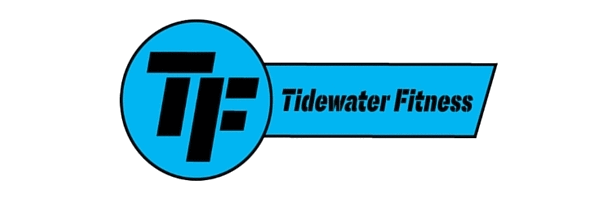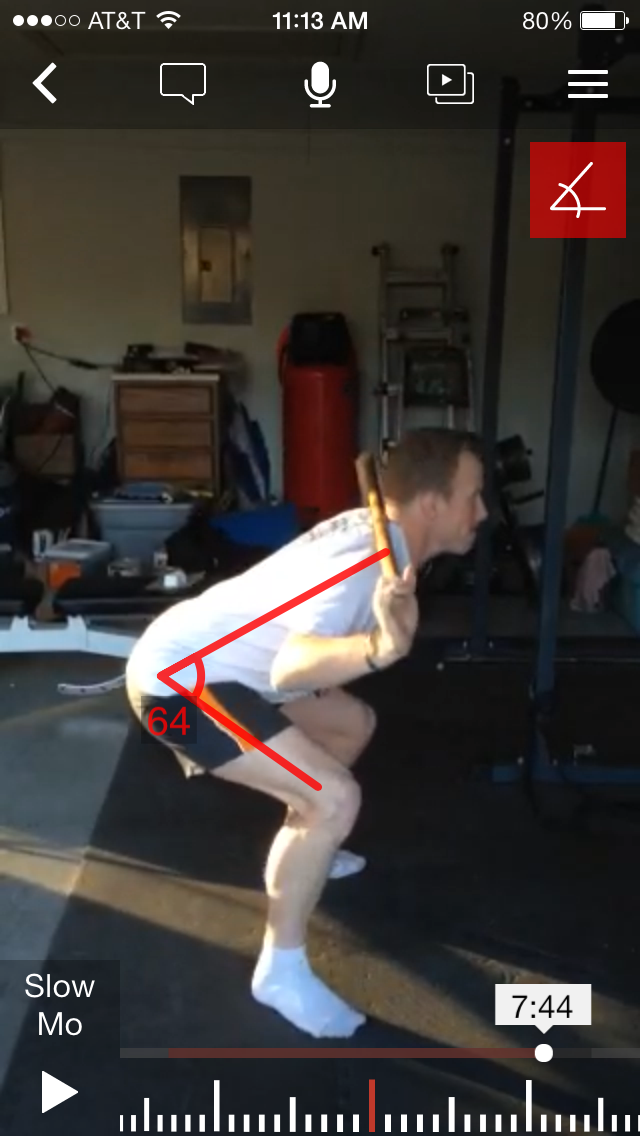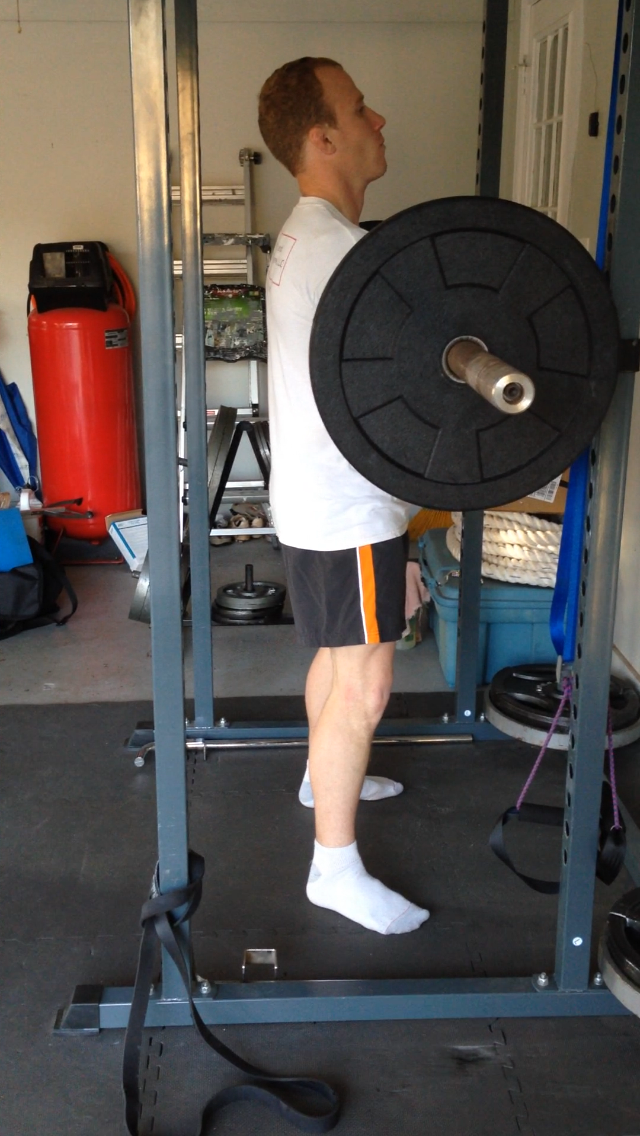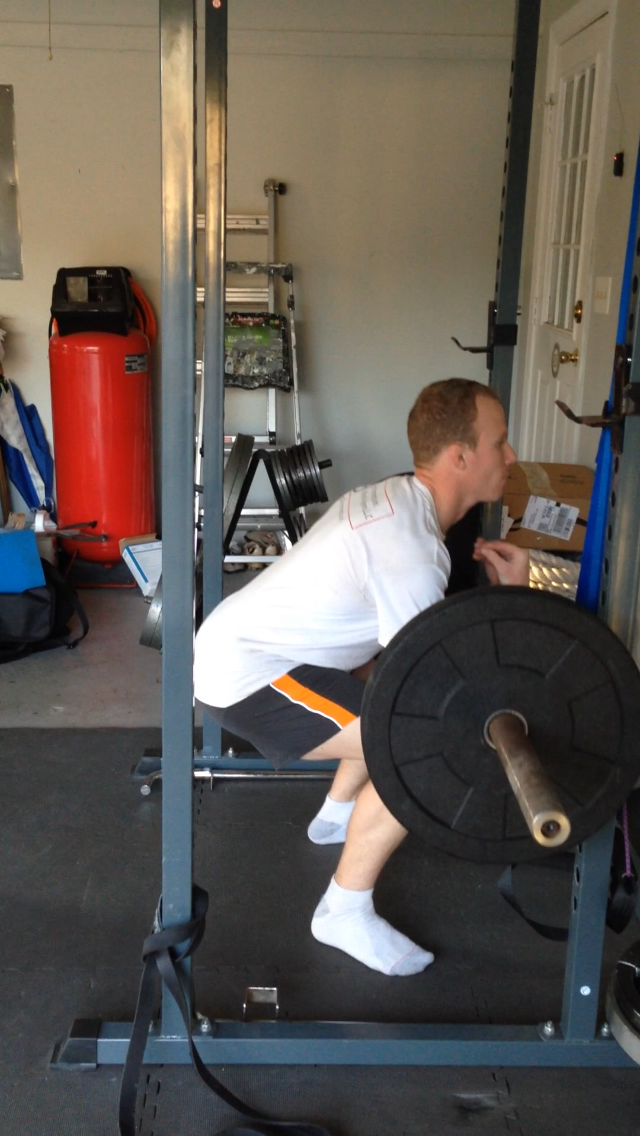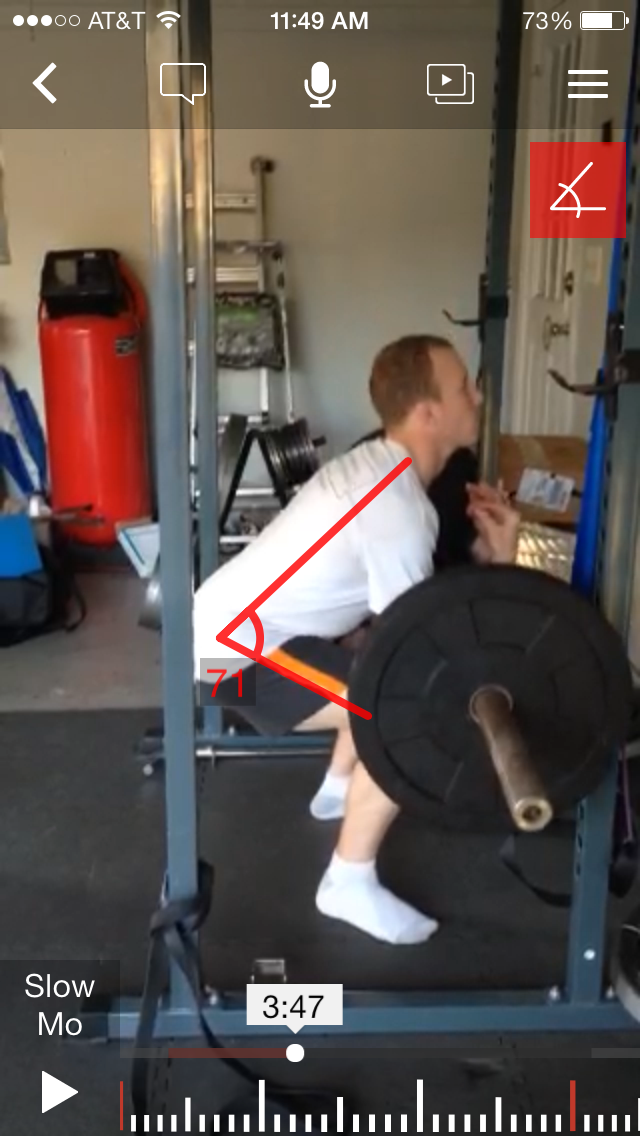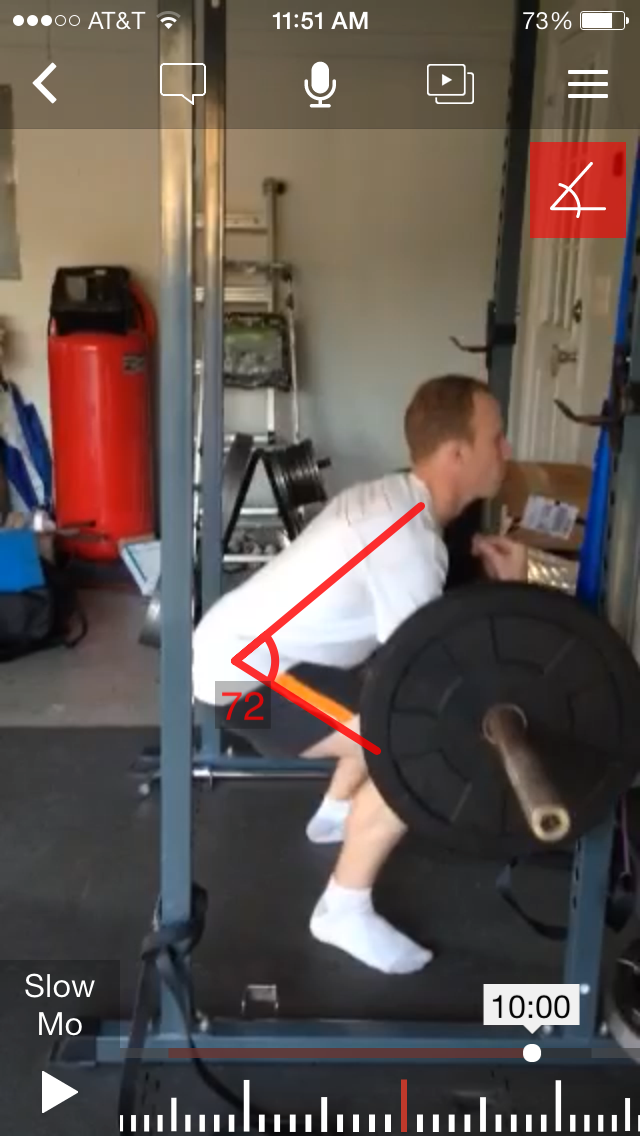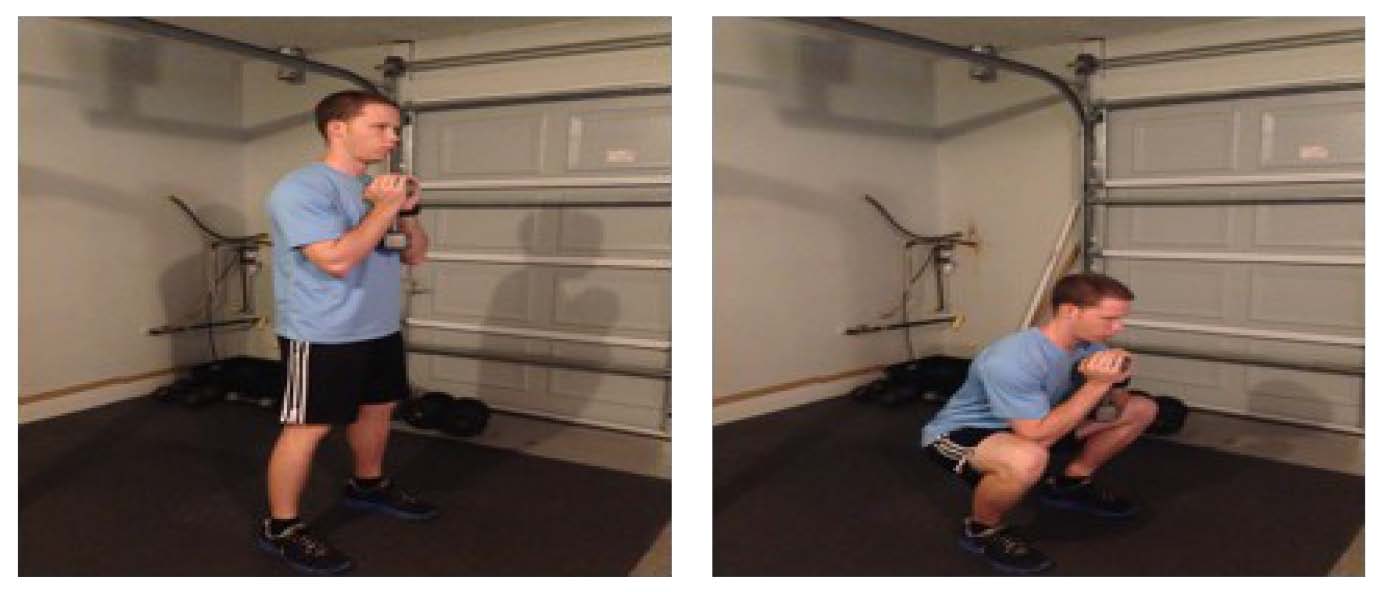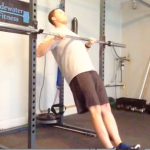The squat is held by some as the king of all exercises and for good reason. It activates your abs, glutes, quads, hamstrings, and calves all in one movement. Not many exercises can do that.
This makes it a must for any training program. And the great thing about it is that there are many different variations you can perform.
However, most cannot perform a single squat with correct technique. Years of sitting and poor posture can make it extremely difficult to do so.
The squat requires mobility at various joints like the hips and ankles and stability from the trunk in order to perform it correctly. It should be seamless and fluid.
Today, I want to show you a little trick you can use to clean up your squat in a few minutes.
This is my buddy T.J. He was having some trouble with his squat so he asked if I could take a look at it.
First, I had him perform a squat with a dowel on his shoulders.
He primarily does back squats during his workouts, so I had him set up similar to that. By doing this is will mimic his actual squat pattern with a bar on his back.
I told him to perform three reps. The pictures below are in the bottom position of the first and last rep.
The first thing you’ll notice is that he doesn’t get down very far. When each rep, it was as if he was blocked from going any farther.
Another thing to note is his facial expressions. It looked like he was really struggling to get down to that depth.
He also had to lean forward more as he continued just to gain a little extra depth. Look at the difference in the angle of his trunk and hips. It’s around 10 degrees.
This occurred because he was losing his balance. His forward lean served as a counterbalance. You can even see this as he came up from this third rep.
See how his toes come off the ground? This is a balance issue.
As I mentioned above, the squat requires a tremendous amount of trunk stability. This means the trunk must be able to resist movement from a force being placed upon it. In essence, the trunk must remain strong and rigid through the squat.
Your body should be able to do this instinctively, but some have lost this ability. The body is very smart too. If you do not have the capability to stabilize properly, your body recognizes this and blocks you from going too far. It’s a protective effect.
So in T.J.’s case, if he were to go beyond the limits his body has given him there is a greater risk injury. The good news is if we can get T.J. to create this stability then his squat should improve.
But how do you do that?
Well, the easiest way to do this is to front load his squat. This means, instead of having the weight on his back we placed it in the front.
The specific version of the squat I had him do is called a Zercher squat. In order to perform it, you place the bar in the crease of your elbows and then squat.
What this does is forces him to create stability in his trunk. If he doesn’t, there is no way he can hold the weight up.
So, here is what his squat looked like once he created that stability.
There’s a difference there right? You can see he gets lower, and he looks more balanced. Look at his face, it’s calm and relaxed. He is able to get to this depth more easily and isn’t forcing anything.
He is also able to keep his hip and trunk angle very similar between the first and third rep unlike before.
Now, you do not have to use a bar to achieve the same result. In fact, if you are just starting out there is a better alternative. T.J. has been lifting for several years, which is why I had him perform the Zercher Squat.
A Dumbbell Goblet Squat will give you the same front loading effect as the barbell. The dumbbell forces you to create a stable trunk and also serves to counterbalance your weight.
This is a great place to start if you are just learning how to squat.
WRAPPING UP
As T.J. becomes more comfortable with this, he could further improve his squat by adding in some hip and ankle mobility drills.
Like I mentioned earlier, the squat requires stability and mobility. You can’t neglect one for the other; they go together.
Gray Cook, physical therapist and creator of the Functional Movement Screen, states “the body is a stable segment connected by mobile joints”.
Think about that from the perspective of the squat. The trunk is your stable segment while the hips and ankles are the primary mobile joints. They all must function in unison.
Squatting is a fundamental movement. Proper technique requires practice. If you are having trouble getting low or do not feel balanced, try this front loading technique. It’s simple and can clean your squat up fast!
If you are looking for a personal trainer in Savannah, contact me to set up a consultation.
And if you found any of this information helpful, or know of someone it could help please share with others!
